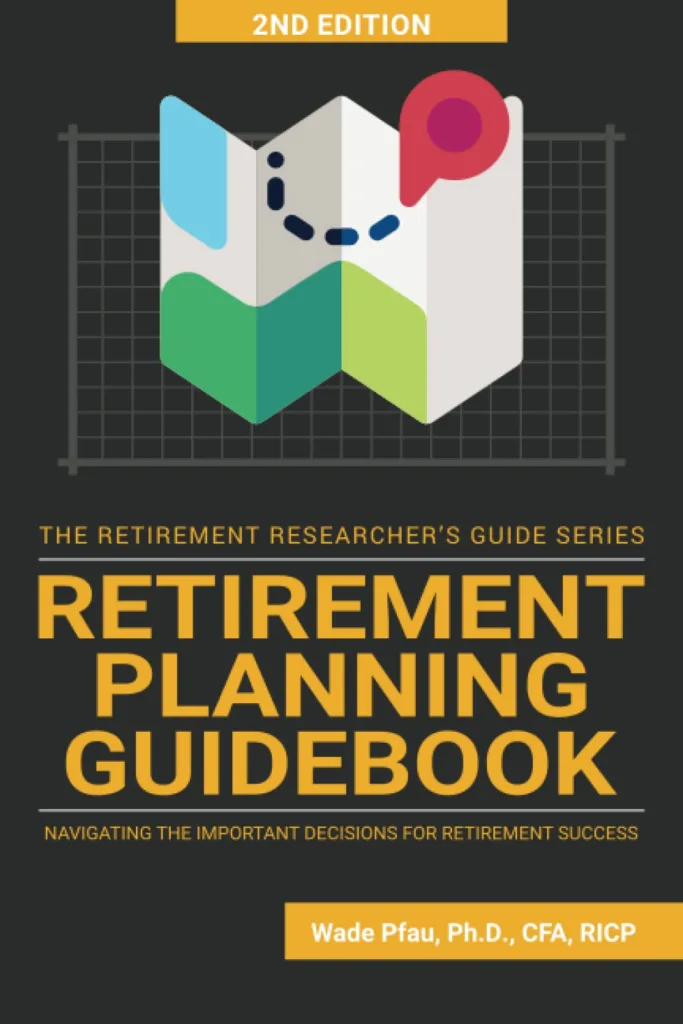From Good Intentions to the Biggest Scam Ever Imposed on the American People
Social Security was established in 1935 with the noble goal of addressing the financial challenges faced by retirees.
Back then, life expectancy in the United States was around 45-50 years, leaving many individuals without adequate retirement savings.
The creation of Social Security aimed to provide a safety net, guaranteeing a basic income during their golden years.
Over the years, Social Security has transformed into a controversial topic, raising concerns about its viability.
With the increasing life expectancy of 77 years in the United States, significantly higher than in 1935, the current structure of Social Security is facing sustainability issues.
Let’s explore the challenges and possible solutions for Social Security in light of these changes.
According to projections by the Social Security Administration, the Social Security Trust Fund is expected to run out by 2035.
This implies that by that time, Social Security will only be able to pay out 79% of the scheduled benefits. Subsequently, the benefits will gradually decrease until the Trust Fund is fully depleted by 2090.
There are several reasons why Social Security is facing sustainability challenges. Firstly, the United States population is aging, resulting in a reduced worker-to-retiree ratio.
Secondly, the birth rate in the United States is declining, which will further decrease the number of future workers available to support the growing retiree population.
These demographic trends pose significant concerns for the long-term viability of Social Security.
Social Security benefits are adjusted for inflation, ensuring they rise annually to match the increasing cost of living.
However, it’s important to note that Social Security taxes are not similarly adjusted. As a result, the government collects less money from taxpayers each year, while benefits continue to grow.
This dynamic of increasing benefits and stagnant taxes has important implications for the long-term sustainability of the Social Security system.
The combination of these factors is leading to a significant deficit in the Social Security Trust Fund. If immediate action is not taken by the government to address this issue, there will be a reduction in Social Security benefits for future retirees.
Start investing today with Acorns, the easy way to save and invest for your future.
Sign up today with this exclusive link and get a free $10 investment! Acorns
How Social Security Works

Social security is funded through payroll taxes, which are deducted from workers’ wages and matched by employers.
The current tax rate is 12.4%, split evenly between workers and employers. Self-employed individuals are responsible for paying the entire tax themselves. These taxes apply to the first $147,000 of earnings in 2022.
The funds collected from these taxes are allocated to two trust funds: the Old-Age and Survivors Insurance (OASI) trust fund, which provides benefits to retired workers and their families, and the Disability Insurance (DI) trust fund, which provides benefits to disabled workers and their families.
Ensure your financial security with social security contributions. These contributions, collected from payroll taxes, are deducted from your wages and matched by your employer.
The current tax rate of 12.4% is evenly split between you and your employer. Self-employed? You’re responsible for the entire tax.
This tax credit applies to the first $147,000 of earnings in 2022. Rest easy knowing that these funds support the Old-Age and Survivors Insurance (OASI) trust fund, providing benefits to retired workers and their families, as well as the Disability Insurance (DI) trust fund, providing benefits to disabled workers and their families.
Trust funds do not hold assets or investments. They serve as accounting devices to track money inflows and outflows. Excess funds are lent to the federal government for general operations and public debt financing.
In return, the trust funds receive special-issue Treasury bonds, akin to government IOUs. These bonds earn interest, which is credited to the trust funds. Discover how trust funds work and their role in financing government operations and public debt.
Social security benefits are determined by a formula that considers the worker’s earnings history, retirement age, and inflation.
In 2023, the average monthly benefit for retired workers is $1,840.27. These benefits are adjusted annually for inflation using the Consumer Price Index for Urban Wage Earners and Clerical Workers (CPI-W).
However, it’s important to note that these benefits may be subject to income taxes if they exceed certain thresholds.
- Related Reading:
- Download our free E-book today and start learning how to create wealth for yourself!
- 11 Best Apps That Pay You Real Money in 2023
- Americans Leaving the USA in 2023
How Social Security Became a Scam

Plan for the retirement you deserve with the Retirement Planning Guidebook.
Order your copy today with this exclusive link and get 10% Off: Amazon.com
How did Social Security, initially established with good intentions, evolve into the largest scam and fraud ever perpetrated on the American people?
Discover the unsettling truth behind this controversial program and its impact on society.
One reason for the financial strain on the government is its history of making promises of benefits that exceed its budgetary capacity.
An illustrative instance is the 1983 Social Security Amendments passed by Congress, which expanded coverage and raised benefits. However, the government failed to raise taxes to fund these additional benefits.
This situation highlights the need for responsible fiscal planning and budgeting to ensure sustainable social security programs.
One of the reasons is that the government has utilized Social Security as a source of funding for other programs.
An illustrative instance is the Medicare Act of 1965, the law wherein Congress established a government-operated health insurance program for seniors.
Medicare is partly financed through payroll taxes, which are the same taxes that contribute to the funding of Social Security.
Due to these policies, Social Security is currently experiencing a significant deficit. The government has two options: increase taxes or reduce benefits.
Failure to take action will result in Social Security becoming bankrupt by 2035.
- Related Reading:
- Download our free E-book today and start learning how to create wealth for yourself!
- 11 Best Apps That Pay You Real Money in 2023
- Surprising Reasons Behind Soaring Home Prices Despite 7.5% Interest Rates
Why Social Security Is a Ponzi Scam

The Ultimate Retirement Guide for 50+ is your one-stop shop for everything you need to know to plan for a comfortable and secure retirement.
Get 50% Off today with this exclusive link: Amazon.com
Social Security is often criticized as resembling a Ponzi scheme, a fraudulent investment strategy that relies on using new investors’ money to pay returns to existing investors.
Unlike traditional retirement plans that utilize accumulated savings or investments, Social Security pays benefits to current retirees with taxes collected from current workers.
This system can function smoothly as long as there are more workers than retirees and the economy grows faster than the population ages.
However, recent decades have seen changes in these conditions, leading to concerns about the sustainability of the system.
Social security is facing a significant challenge due to a demographic crisis. Since its inception, the ratio of workers to retirees has been declining steadily.
In 1950, there were 16.5 workers for every retiree. By 2020, this number dropped to only 2.8, and it is projected to decrease further to 2.39 by 2035.
This demographic shift means that fewer workers will have to support a larger population of retirees, placing a strain on payroll tax revenues.
Social security is facing an economic crisis with various contributing factors. Since the 1970s, the growth rate of wages and salaries has been slowing down due to globalization, automation, outsourcing, immigration, and income inequality.
As a result, there will be a decrease in payroll tax revenue generated per worker. Additionally, the interest rate on Treasury bonds held by the trust funds has been declining since the 1980s due to low inflation, fiscal deficits, monetary policy, and global demand.
Consequently, there will be a decrease in income credited to the trust funds. This poses significant challenges to social security’s sustainability and financial stability.
The combination of demographic and economic factors has led to a persistent imbalance between the income and expenses of social security.
Since 2010, Social Security has been paying out more in benefits than it collects in taxes. To address this shortfall in payments, it has been utilizing its trust fund reserves by redeeming Treasury bonds.
However, it’s important to note that these reserves are not tangible assets; they are simply claims on the federal government’s general fund.
The redemption of these reserves necessitates the government to consider options such as raising taxes, reducing spending, or borrowing from other sources.
Based on the latest projections from the office of the Social Security Trustees, the DI trust fund is expected to sustain full benefits until 2097.
However, the OASI trust fund is projected to be depleted by 2032. When considering a combined analysis of both funds, they are estimated to be exhausted by 2032. At this point, Social Security would only be able to pay approximately 80% of the scheduled benefits, unless Congress takes action.
This would result in a significant reduction in income and living standards for the millions of Americans who rely on social security for their retirement security.
- Related Reading:
- Download our free E-book today and start learning how to create wealth for yourself!
- 11 Best Apps That Pay You Real Money in 2023
- How to Overcome Financial Procrastination
What the Government Should Do

Get 20% Off The Total Money Makeover with this exclusive link: Amazon.com
The government needs to urgently address the issues with the Social Security system. There are several effective strategies to accomplish this, including:
- Raising taxes: To bolster the revenue of the Social Security Trust Fund, the government may consider implementing an increase in payroll taxes. This measure can contribute to the financial stability and sustainability of the fund.
- Cutting benefits: The government has the option to reduce the Social Security shortfall by implementing means-testing for benefits. This approach ensures that only individuals in need receive the benefits they require. By implementing means-testing for Social Security benefits, the government can efficiently allocate resources to those who truly require them.
- Raising the retirement age: To reduce the number of individuals receiving Social Security benefits, the government has the option to increase the retirement age. This measure aims to optimize the system while ensuring its sustainability and long-term viability.
The government should consider transitioning to a private retirement savings system, empowering individuals to save for retirement in personalized accounts.
This shift enables individuals to take control of their financial future and plan for a secure retirement, reducing reliance on government support. Explore the country the option of adopting a private retirement savings system for enhanced financial planning and security.
What Can Individuals Do?

Start investing today with Acorns, the easy way to save and invest for your future.
Sign up today with this exclusive link and get a free $10 investment! Acorns
To safeguard against the anticipated Social Security bankruptcy, individuals can proactively take measures. One effective strategy is to begin saving for retirement at an early stage.
By initiating savings early on, individuals allow their funds ample time to accumulate and expand. Secure your financial future by taking these proactive steps.
Investing your savings in assets that have a high potential for appreciation, like stocks and real estate, is a smart way to safeguard your financial future. By doing so, you can grow your savings faster than inflation and secure long-term financial growth.
Buying private health insurance is a wise move to complement Medicare. It safeguards you against escalating healthcare expenses during your retirement years. Protect your financial well-being and secure peace of mind.
Final Thoughts
Social Security, initially established with good intentions when life expectancy was lower, has become a topic of debate.
With the current life expectancy in the US being significantly higher, concerns about the program’s viability have arisen. It is projected to face financial challenges and potentially exhaust its funds by 2035.
Don’t depend solely on social security for retirement income. Take control of your financial future and discover alternative options that offer greater security, freedom, and prosperity. Ensure a bright and stable future with smart financial choices.
I hope this blog post has provided valuable insights into the reality of social security and why it may not be reliable. If you found this post helpful, kindly share it with your friends and family who could benefit from other personal information about it. Help spread awareness about this crucial topic!
- Related Reading:
- The Cost of Living Crisis: What You Need to Know
- How to Use Data to Improve Your Financial Life
- How to Protect Your Money Against Inflation
Frequently Asked Questions
Q: Why is Social Security unsustainable in its current form?
A: Social Security is facing sustainability challenges due to several reasons. Firstly, the aging population in the United States leads to a reduced number of workers supporting each retiree.
Secondly, the declining birth rate implies even fewer workers in the future to support the increasing number of retirees. Additionally, Social Security benefits are adjusted for inflation to keep up with the rising cost of living, while taxes are not.
As a result, the government collects less revenue from taxpayers each year, while benefits continue to rise. Explore the key factors impacting the sustainability of Social Security in its current form.
Q: What can the government agencies do to fix the Social Security system?
A: The Social Security system can be improved by implementing various strategies. One approach is to increase taxes, which would boost revenue for the Social Security Trust Fund.
Another option is to reduce benefits, effectively addressing the shortfall in the Trust Fund. Means-testing benefits could ensure they are allocated to those in need. Additionally, raising the retirement age would decrease the number of individuals receiving Social Security benefits. Explore these potential solutions for a stronger Social Security system.
Q: What can individuals do to protect themselves from the impending Social Security bankruptcy?
A: Protect Yourself from Social Security Bankruptcy: Key Tips for Retirement Planning
When it comes to safeguarding your future amidst the looming Social Security bankruptcy, there are several effective measures to consider.
One crucial step is to prioritize early retirement savings. By initiating savings at an early stage, you allow your money ample time to grow and multiply. Another wise move is to invest your savings in assets that have a high potential for appreciation, such as stocks and real estate.
This strategy ensures that your savings outpace inflation and grow steadily over time. Additionally, to shield yourself from escalating healthcare costs during retirement, it’s advisable to explore private health insurance options that can supplement Medicare coverage.
Take charge of your financial security today and secure a worry-free retirement tomorrow!
Q: Are there any alternatives to the Social Security number?
A: There are several alternatives to Social Security to consider. One option is transitioning to a private retirement savings system, enabling both employees and individuals to save for their retirement in personal accounts instead of relying solely on the government.
Another alternative is implementing a universal basic income (UBI) program, which would provide a basic income to all citizens, regardless of employment status. Explore these alternatives for a more flexible and secure retirement plan.
Q: Which option do you think is best?
A: I advocate for transitioning to a private retirement savings system to enhance individual control and sustainability.
However, the government must provide a safety net for those unable to save for retirement. This can be achieved through a UBI program or means-tested Social Security.
Ultimately, resolving the Social Security system requires a public conversation and collaboration to find an inclusive solution that benefits all. Secure your retirement with a private savings system and government-backed safety nets. Join the conversation today!
- Related Reading:
- Download our free E-book today and start learning how to create wealth for yourself!
- 11 Best Apps That Pay You Real Money in 2023
- Surprising Reasons Behind Soaring Home Prices Despite 7.5% Interest Rates














